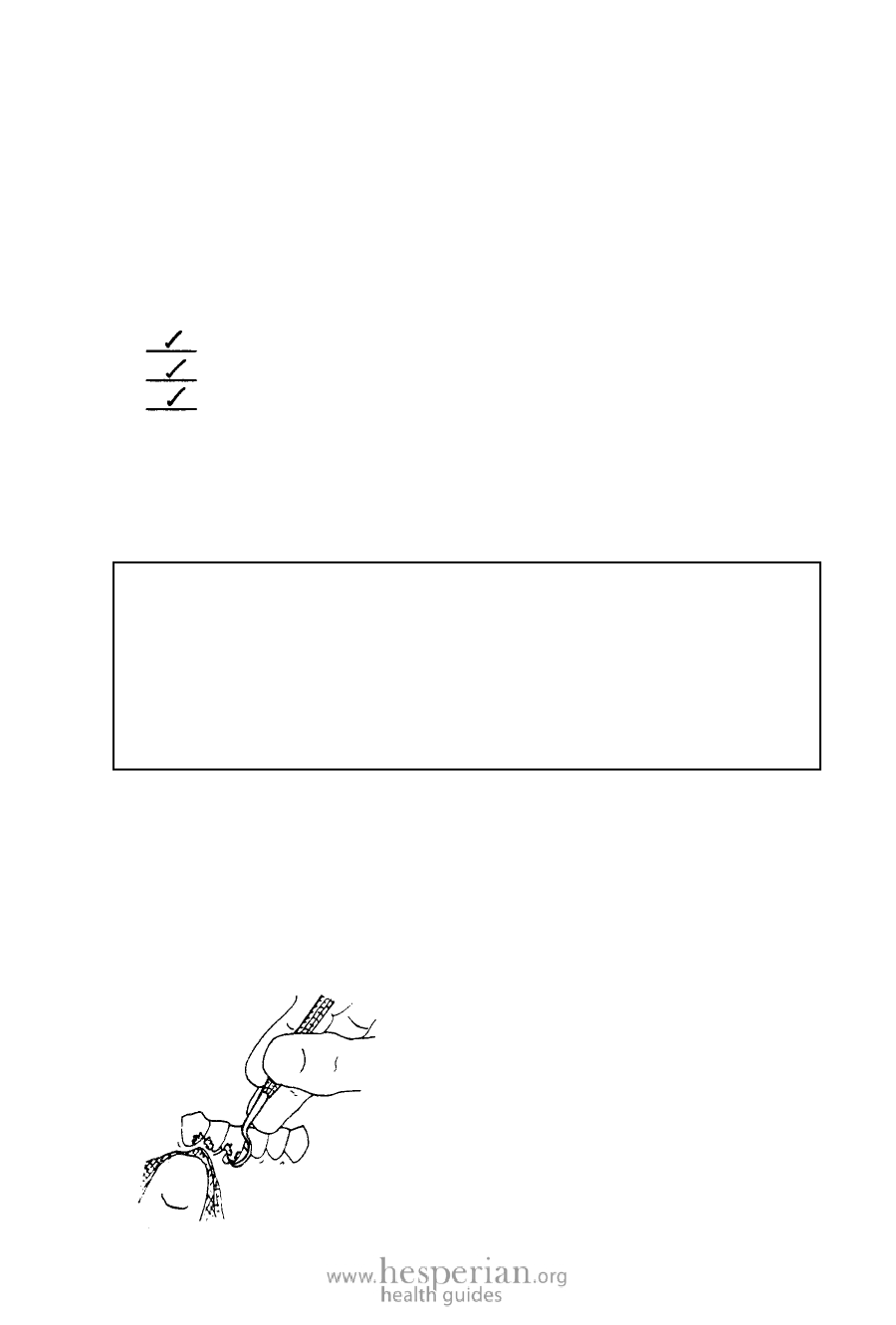
Where There Is No Dentist 2012 129
HOW TO SCALE TEETH
Tartar starts to form inside the gum pocket. There it builds up, because the
gums protect it. So you often must feel rather than see the tartar when you
scale a tooth.
You must remove all of the tartar so the gums can heal. New tartar grows
faster when there is old tartar Ieft behind for it to build upon.
Lay out what you need ahead of time:
your instruments: scalers, mirror, probe, tweezers
sharpening stone
cotton gauze
Your light must be good enough to see the tooth and gums around it clearly.
Scaling teeth requires time and practice. Make yourself and the person
comfortable. You can sit next to a special chair that lets the person lean back
(see page 75).
The steps in scaling teeth are these (pages 129–133):
1. Explain to the person what you are going to do.
2. Feel under the gum for rough spots (tartar).
3. Place the scaler under the tartar.
4. Pull the scaler against the side of the tooth.
5. Check to be sure the tooth is smooth.
6. Explain what you have done and what the person should now do.
1. Explain what you are going to do. Tell the person what to expect.
There will be some bleeding and possibly some pain. However, you can
stop and rest, or inject local anesthetic, if it is painful. Remember: first
wash your hands and your instruments! (See pages 86–89.)
2. Feel under the gum for tartar. Tartar feels like a rough spot on the root
of the tooth. Since tartar can form anywhere inside the gum pocket, feel
for it on all sides of the tooth.
You can check for tartar two ways:
a. Use your probe. Slide the point up and
down along the root surface under the
gum. Feel for places that are rough.
Teeth without tartar are smooth.
b. Use cotton gauze. Twist a corner and
press it between the teeth. The gauze
lowers the gum and soaks up the spit.
You can then see more tartar.